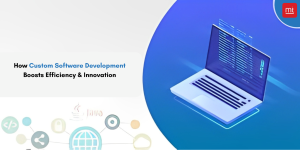Document Management Software: The Key to a Paperless Office

In today’s digital age, the concept of a paperless office has gained significant momentum. Businesses are recognizing the benefits of reducing paper usage, including cost savings, increased efficiency, and enhanced sustainability. Document management software is one crucial tool that facilitates the transition to a paperless office.
As small businesses continue to grow, the amount of paperwork and documents they have to manage can be overwhelming. Therefore, a company needs to have an efficient way to organize, store, and manage their documents in order to keep their operations running smoothly. Document management software (DMS) is the key to achieving a paperless office.
Document management software provides a simple and organized way to store all documents within an organization. With DMS, businesses can quickly find documents they need and keep them secure from unauthorized access. In addition, it makes it easier for teams to collaborate on projects and documents with features such as version control, sharing capabilities, and task tracking. By streamlining document management, DMS can help businesses increase their productivity and efficiency.
DMS also makes it easier for businesses to comply with industry regulations. For example, companies in industries such as healthcare and finance must adhere to strict document storage and access standards. With DMS, companies can ensure they are in compliance with these regulations by having secure document storage and access controls.
This blog explores how document management software can help organizations eliminate paper documents and streamline their operations for a more efficient and environmentally friendly workplace.
- The Challenges of a Paper-Based Office
Traditional paper-based offices face numerous challenges, including physical storage limitations, difficulties in document retrieval and sharing, and the risk of misplacing or losing important files. These issues can lead to delays, errors, and increased costs. The environmental impact of paper consumption, such as deforestation and carbon emissions from production and disposal, must be addressed. Document management software presents a viable solution to these challenges by digitizing and centralizing document storage, enabling efficient management, and reducing reliance on paper.
- Digitizing Documents
Document management software allows businesses to convert physical documents into digital files. Scanning and indexing capabilities make it easy to digitize paper documents and organize them in a structured manner. By converting paper-based information into digital format, companies can eliminate the need for physical storage, reduce clutter, and make documents easily searchable and accessible.
- Centralized Document Repository
A key feature of document management software is its ability to create a centralized document repository. All digital files can be securely stored in a centralized location, accessible to authorized personnel from anywhere, at any time. This eliminates the need for physical filing cabinets and decentralized storage systems, making locating and retrieving documents quickly easier.
- Enhanced Document Organization and Searchability
Document management software offers robust organizing and indexing capabilities. Documents can be categorized, labeled, and tagged with relevant metadata, making it effortless to locate specific files using search functions. This feature saves valuable time spent manually searching through stacks of paper documents.
- Document Version Control and Collaboration
In a paperless office, version control becomes crucial to prevent confusion and ensure that everyone is working with the most up-to-date information. Document management software allows multiple users to collaborate on documents simultaneously, ensuring that changes are tracked and previous versions are preserved. This eliminates the need for printing and circulating physical copies, enhancing collaboration efficiency.
- Workflow Automation
Document management software often incorporates workflow automation features, enabling organizations to automate repetitive tasks and streamline document processes. Workflows can be designed to automate document routing, approvals, and notifications, reducing manual effort and accelerating business processes. This automation eliminates the need for printing, signing, and physically moving paper documents between departments, resulting in faster turnaround times and improved productivity.
- Improved Security and Compliance
Document management software offers robust security features to protect sensitive information. Access controls, encryption, and audit trails ensure only authorized individuals can view, edit, or delete documents. Furthermore, compliance with industry regulations, such as HIPAA or GDPR, can be more easily achieved through automated document management systems that enforce retention policies and enable secure document sharing.
- Cost Savings
Adopting document management software can lead to significant cost savings. Eliminating paper-related expenses, such as purchasing, printing, and storing physical documents, reduces overhead costs. Additionally, time savings resulting from improved document organization, searchability, and streamlined workflows contribute to overall efficiency gains and increased productivity.
Conclusion:
Embracing document management software is vital to achieving a paperless office. It offers many benefits, including improved document organization, enhanced collaboration, workflow automation, heightened security, and substantial cost savings. In addition, by leveraging the power of document management software, businesses can optimize their operations and contribute to a more sustainable future.






